Java Modulo Operator

Creating A Bulls And Cows Game In Java With Swing Ui By Sylvain Saurel Medium

Check If A Number Is Even Or Odd Without Using Modulo Or Division Operators In Java

Modulo Or Remainder Operator In Java Java67

Modulus In Java Remainder Or Modulus Operator In Java Edureka

How To Get The Remainder In Java
How To Find The Second Last Digit In A Number Using Java Quora
For example, the following line of code.

Java modulo operator. An example of leap year with modulo operator. Both combine two Boolean expressions and return true only if both expressions are true. The source for this interactive example is stored in a GitHub repository.
The quotient is the quantity produced by the division of two numbers. The division operator divides left-hand operand by right-hand operand. In Java, the modulus operator is a percent sign, %.
The result of using the ‘%’ operator always yields the same sign as its second operand or zero. The modulo operator gives us exactly this remainder:. Modulo operator in Java.
Precedence rules can be overridden by explicit parentheses. Java has two operators for performing logical And operations:. Instead of returning the result of the division, the modulo operation returns the whole number remainder.
For the operands of integer types, the result of a % b is the value produced by a - (a / b) * b. A comparison operator compares its operands and returns a Boolean value based on whether the comparison is true. If you'd like to contribute to the interactive examples project,.
First, let us discuss how the operator works. This function takes as arguments any numeric datatype or any nonnumeric datatype that can be implicitly converted to a numeric datatype. If you want to know if a number is an even "hundred", like 300, 400, 500 or , you can test for it like this:.
An operator is a character that represents an action, for example + is an arithmetic operator that represents addition. There's a good chance you'll recognize them by their counterparts in basic mathematics. 1) Basic Arithmetic Operators 2) Assignment Operators 3) Auto-increment and Auto-decrement Operators 4) Logical Operators 5) Comparison (relational) operators 6) Bitwise Operators 7) Ternary Operator.
It enables code such as the following:. The remainder operator % computes the remainder after dividing its left-hand operand by its right-hand operand. The modulus operator - or more precisely, the modulo operation - is a way to determine the remainder of a division operation.
The remainder and modulo are two similar operations;. Let us work with them one by one − Divison Operator. Assume if a = 60 and b = 13;.
Modulo is represented by a percentage sign (%). Basically this method performs the modulo operator between this BigInteger and method argument val simply this % m. Let me make you guys familiar with the technical representation of this operator.
Meanwhile in using the mod() operator it will always return a positive value. X % y always equals x % -y. 21 modulo 5 is 1 22 modulo 5 is 2 23 modulo 5 is 3 24 modulo 5 is 4 25 modulo 5 is 0 In C, C++ and Java, modulo is represented as the percent sign.
Both dividend and divisor can be of any type except string, the result. Java regex for currency symbols. The modulus operator returns the remainder of the two numbers after division.
Given two numbers, a (the dividend) and n (the divisor), a modulo n (abbreviated as a mod n) is the remainder from the division of a by n.For instance, the expression “7 mod 5” would evaluate to 2 because 7 divided by 5 leaves a remainder of 2, while “10 mod 5” would evaluate to. Bitwise operator works on bits and performs bit-by-bit operation. The modulus operator works on integers (and integer expressions) and yields the remainder when the first operand is divided by the second.
The Modulus operator defines the remainder operation that returns the remainder resulting from dividing two specified Decimal values. Types of Operator in Java. The Java modulus ‘%’ operator is one of numerous operators built into the Java programming language.
The Remainder or Modulus Operator in Java. The modulo operator, denoted by %, is an arithmetic operator. /* * Modulus operator returns reminder of the devision of * floating point or integer types.
Remainder (modulo) operator with negative numbers-11 % 5 == -1 11 % -5 == 1 -11 % -5 == -1. A leap year occurs once every fourth year. In the tutorial, we will see Modulo operator in Java and how we can use it with Java.
This example shows how to use Java modulus operator (%). Java has one important arithmetical operator you may not befamiliar with, %, also known as the modulus orremainder operator. Java has well-defined rules for specifying the order in which the operators in an expression are evaluated when the expression has several operators.
It returns the part left over when the numbers are divided. The modulus operator (%) is a useful operator in Java, it returns the remainder of a division operation. Incremental Java Modulus Operator Modulus Operator If both operands for /, the division operator have type int, then integer division is performed.This is regular division, where the remainder is thrown away.
Java program to illustrate Arithmetic Operators:. By Doug Lowe. And Operators (& and &&) in Java.
What if we needed the remainder?. When modulus operator is used with negative integers, the output retains the sign of the dividend. They act the same when the numbers are positive but much differently when the numbers are negative.
However, the usual representative is the least positive residue, the smallest non-negative integer that belongs to that class (i.e., the remainder of the Euclidean division ). Decimal number2 = 4.1m;. Operators are used to perform operations on variables and values.
You can think of the sign of the second operand as being ignored. Also, the absolute value for the result is strictly smaller than the value of the second operand. The modulo division operator produces the remainder of an integer division.
For example 5%2 will return 1 because if you divide 5 with 2, the remainder will be 1. This operator can also be used on objects to assign object references, as discussed in Creating Objects. Facebook twitter linkedin pinterest.
As an example, we know that 3 goes into 9 exactly three times, and there is no remainder. Modulus In Java you take the remainder with the % operator. When the first operand is a negative value, the return value will always be negative, and vice versa for positive values.
JETZT kostenlos den Java Fehler-Guide sichern:. Println ("Java Modulus Operator example");. */ public class ModulusOperatorExample { public static void main (String args) {System.
Difference between Scanner and BufferReader in java. Java Modulo Operator Examples Use the modulo operator to compute remainders in division. Modulus operator java (4) Another nice method to clear things up, In modulus, if the first number is > the second number, subtract the second number from the first until the first number is less than the second.
Happily, Java division has the Euclidean property. Practice using the modulo operator If you're seeing this message, it means we're having trouble loading external resources on our website. If either value is a string, an attempt is made to convert the string to a number.
It is denoted by % (percentage) sign. The operator is used to calculate the remainder of the division between two numbers. For example, (7/2) = 3.
The following example program illustrates the modulus operator (%) :. You can use %just as you might use any other more common operator like+or -. } The remainder is what remains after dividing 11 (the dividend) by 4 (the divisor) – in this case, 3.
In the above expression 7 is divided by 2, so the quotient is 3 and the remainder is 1. In The in operator determines whether an object has a given property. Modulus (%) operator returns only the remainder.
You bought a pen for rs 10 and gave. Example int x = 100 + 50;. Operator Precedence in Java.
In programs we often use the modulo division operator to compute remainders. In the previous tutorial, you learn about Java Variables.You learn to declare variables and assign values to variables. The sign of the first operand decides the sign of the result.
It requires two operands. The sign of the non-zero remainder is the same as that of the left-hand operand, as the following example shows:. In a division operation, the remainder is returned by using modulo operator.
For example, + is an operator that performs addition. The syntax is the same as for other operators:. Public class Example { public static void Main() { Decimal number1 = 16.8m;.
The remainder is the integer left over after dividing one integer by another. Produces the remainder when x is divided by y. The %operator returns theremainder of two numbers.
It's a binary operator i.e. B = 0000 1101-----a&b = 0000 1100. Jshell> 10 % 3 $66 ==> 1 jshell> -10 % 3 $67 ==> -1 jshell> 10 % -3 $68 ==> 1.
Decimal number3 = number1 % number2;. Var resultOfMod = 26 % 3;. The modulus operator divides left-hand operand by right-hand operand and returns remainder.
How to use the modulus operator in Java programming language. Java program to calculate the remainder program – So what exactly is a remainder?. So int a = % 5 ;.
For instance 10 % 3is 1because 10 divided by 3 leaves a remainder of 1. It can be applied to the floating-point types and integer types both. The Modulo Calculator is used to perform the modulo operation on numbers.
This operator returns the remainder left over when one operand is divided by a second operand. This is similar in nature with the mod() method of BigInteger class however in using the remainder, negative results will be returned. That’s all about Modulo operator in java.
Sets a to be zero. When a number is subtracted from another the remaining leftover is the remainder. Divide the dividend by the divisor using / operator.
If you are provided with two numbers, say, X and Y, X is the dividend and Y is the divisor, X mod Y is there a remainder of the division of X by Y. Some examples may help illustrate this, as it’s not necessarily intuitive the first time you encounter it:. For example, multiplication and division have a higher precedence than addition and subtraction.
Similarly when a number is divided from another, if there is a number left, it is called a remainder. Returns the division remainder:. In the example below, we use the + operator to add together two values:.
Returns n2 if n1 is 0. Modulo has a variety of uses. @Test public void whenModulo_thenReturnsRemainder() { assertThat(11 % 4).isEqualTo(3);.
Https://programmieren-starten.de/java-lm3-lp1/ Der sechste Teil unseres Java Tutorials Deutsch (German). The remainder assignment operator (%=) divides a variable by the value of the right operand and assigns the remainder to the variable. A "%" performs modulo division.
Well organized and easy to understand Web building tutorials with lots of examples of how to use HTML, CSS, JavaScript, SQL, PHP, Python, Bootstrap, Java and XML. The division operator in Java includes the Division, Modulus, and the Divide And Assignment operator. Java operators are symbols tells the compiler to perform a task.
What is a Modulus operator in Java?. One arithmetic operator that is slightly less familiar is the modulo (sometimes known as modulus) operator, which calculates the remainder of a quotient after division. Modulus Operator with negative integers.
The Remainder or Modulus Operator in Java. Validate password in java. % is informally called the modulus operator, (sometimes called mod or modulo) though mathematicians and serious computer scientists would beg to differ, it is a remainder operator not a modulus.The JLS (J ava L anguage S pecification) correctly refers to it as a remainder operator.
Learn Arithmetic, Unary, Assignment, Relational, Logical, Ternary, Bitwise, Shift operators in Java with Examples. Now in binary format they will be as follows − a = 0011 1100. The section below shows using the modulo operator in Python.
Console.WriteLine("{0:N2} % {1:N2} = {2:N2}", number1, number2. Would result in the remainder of 2 being stored in the variable resultOfMod. Modulo Operator is one of the fundamental operators in Java.
Java Modulo Operator Examples. Loop and compute a simple hash code. The Modulo operator returns the remainder after dividing the two operands.
Here’s an example that uses the basic And operator (&):. Java credit card validation – Luhn Algorithm in java. Due to the same reason a division by zero isn't possible, it's not possible to use the modulo operator when the right-side argument is zero.
If x and y are integers, then the expression:. The Java programming language provides operators that perform addition, subtraction, multiplication, and division. MOD returns the remainder of n2 divided by n1.
About Modulo Calculator.
Q Tbn 3aand9gcsuyndi3gzmjalwm0imwrqddi5hldv Aydqom2pfhs6xw8fisuk Usqp Cau

Solved Import Java Util Scanner Public Class Moreorless Chegg Com

Casting Converting Numbers

What S The Syntax For Mod In Java Stack Overflow

Java Modulus Operator Remainder Of Division Java Tutorial

Numbers In Ruby Ruby Study Notes Best Ruby Guide Ruby Tutorial
Q Tbn 3aand9gcsuyndi3gzmjalwm0imwrqddi5hldv Aydqom2pfhs6xw8fisuk Usqp Cau
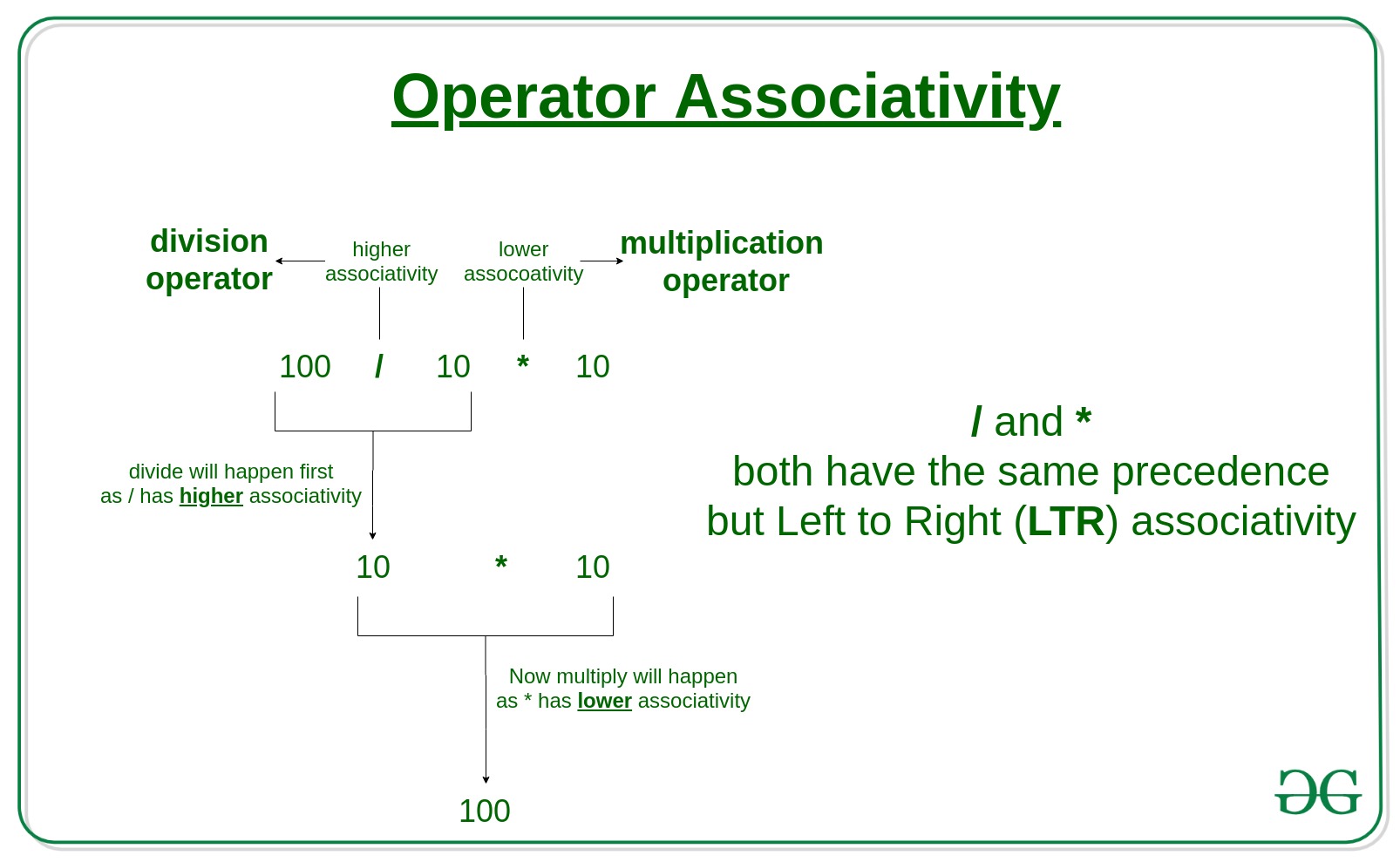
Operator Precedence And Associativity In C Geeksforgeeks
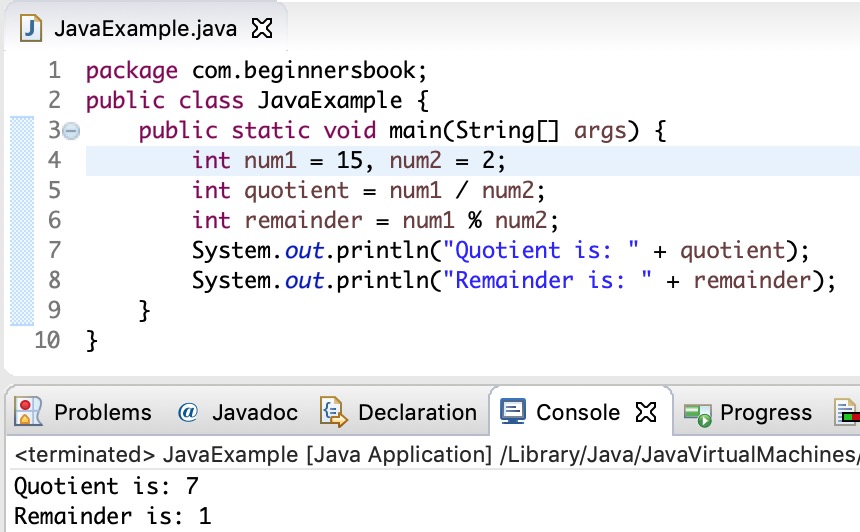
Java Program To Find Quotient And Remainder

Modulo Operator Performance Impact Joseph Lust

Java Modulus Operator Modulus Operator In Java

Modulo Operation Wikipedia

Mod Division In Java Vertex Academy
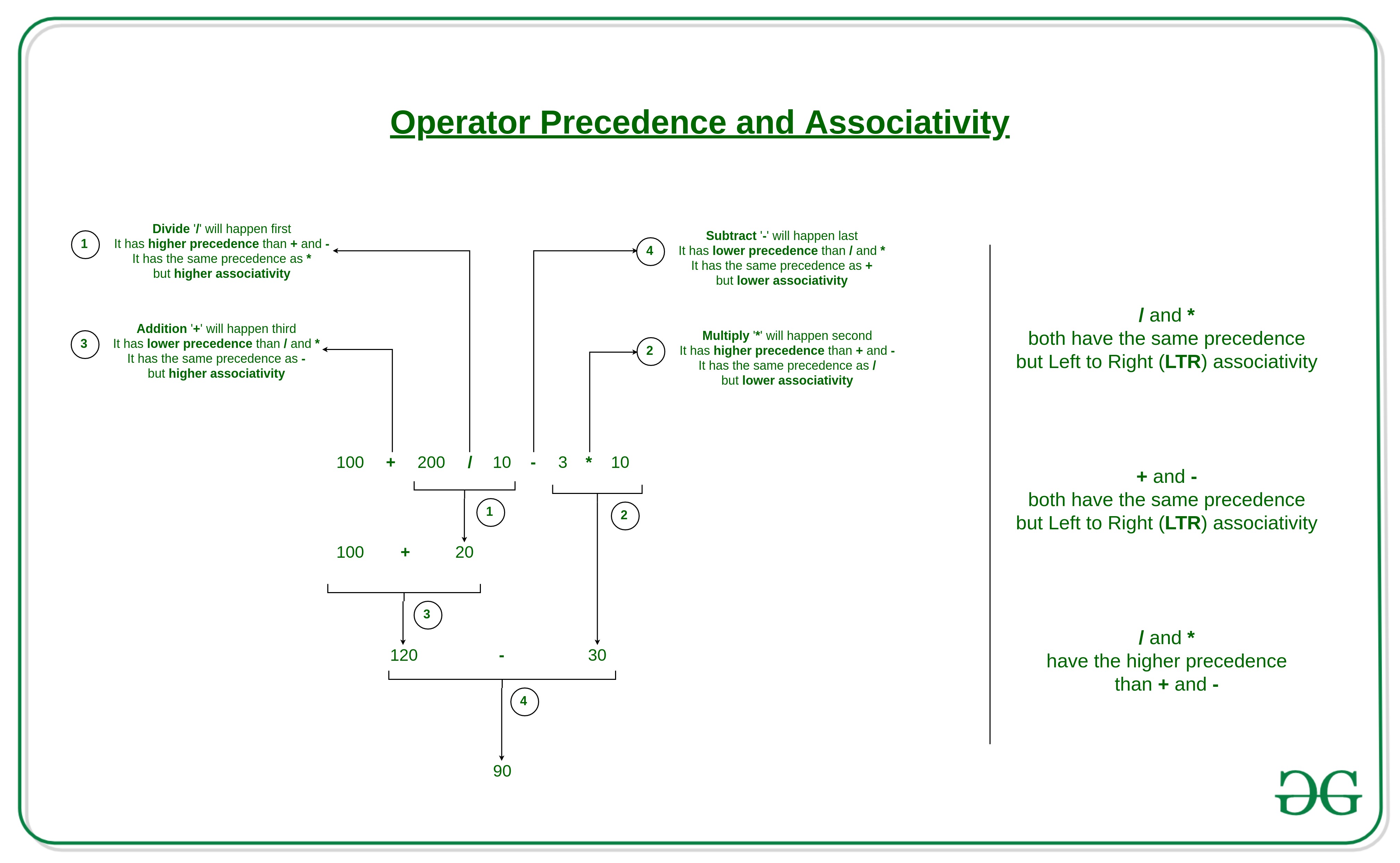
Operator Precedence And Associativity In C Geeksforgeeks

Operators Part 4 Modulus Division Java Youtube

Deep Dive Into Java Operators Vibrant Publishers

Java Modulus Youtube

C Operators Expressions Modulo Operator Operators Precedence
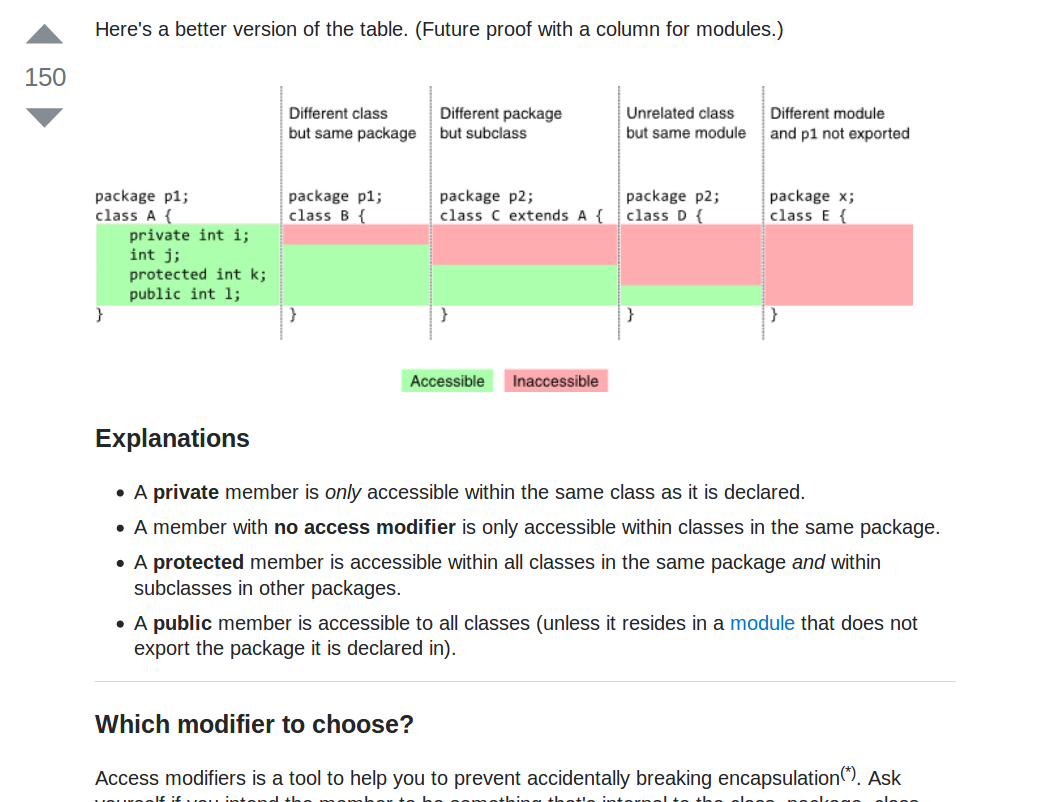
Java Remainder Modulo Operator With Negative Numbers Programming Guide
Q Tbn 3aand9gctovk1lmx8kkkwfvewdfutffikyg1oz Fncvcochnj09q0cxvbh Usqp Cau
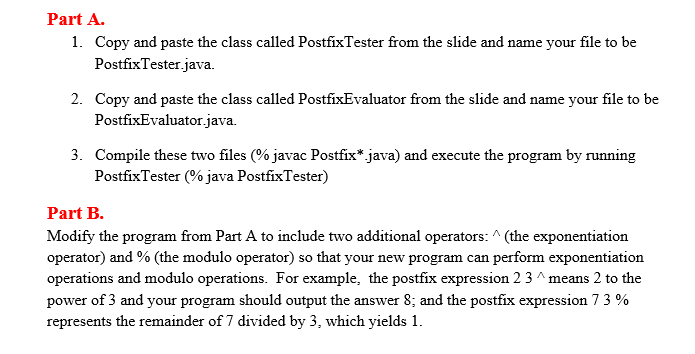
Solved Urgent Help Needed In Javathanx Postfixtester Chegg Com

Multiplying In Java Method Examples Video Lesson Transcript Study Com

Program To Find The Remainder Using Modulo Operator C C Java Youtube
How Does The Modulus Operator Works Quora
How To Use Bitwise Operator In Java Power Of Two Example Java67
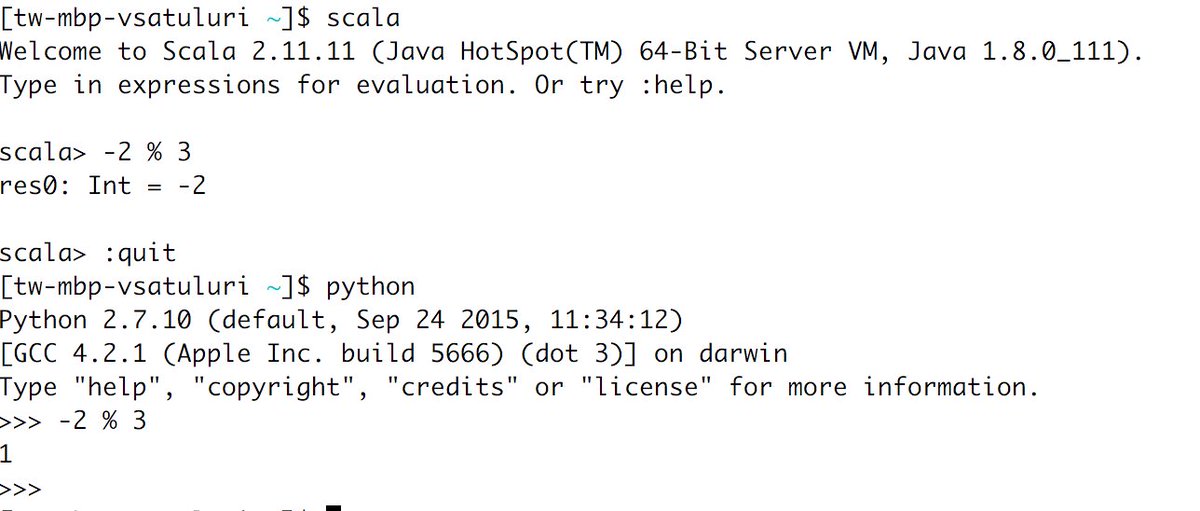
Venu Satuluri Wow Til The Modulo Operator Is Defined Differently By Different Languages It Turns Out You Can T Always Assume X N Is In The 0 N 1 Interval

Modulo Operation Wikipedia

Java Modulus Operator Youtube
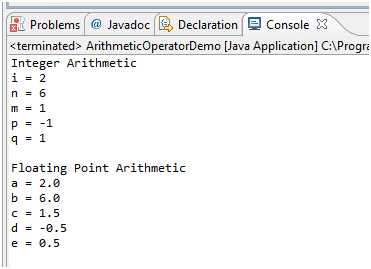
Java Arithmetic Operators W3resource
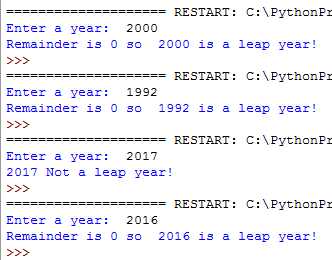
How Modulo Works In Python Explained With 6 Examples
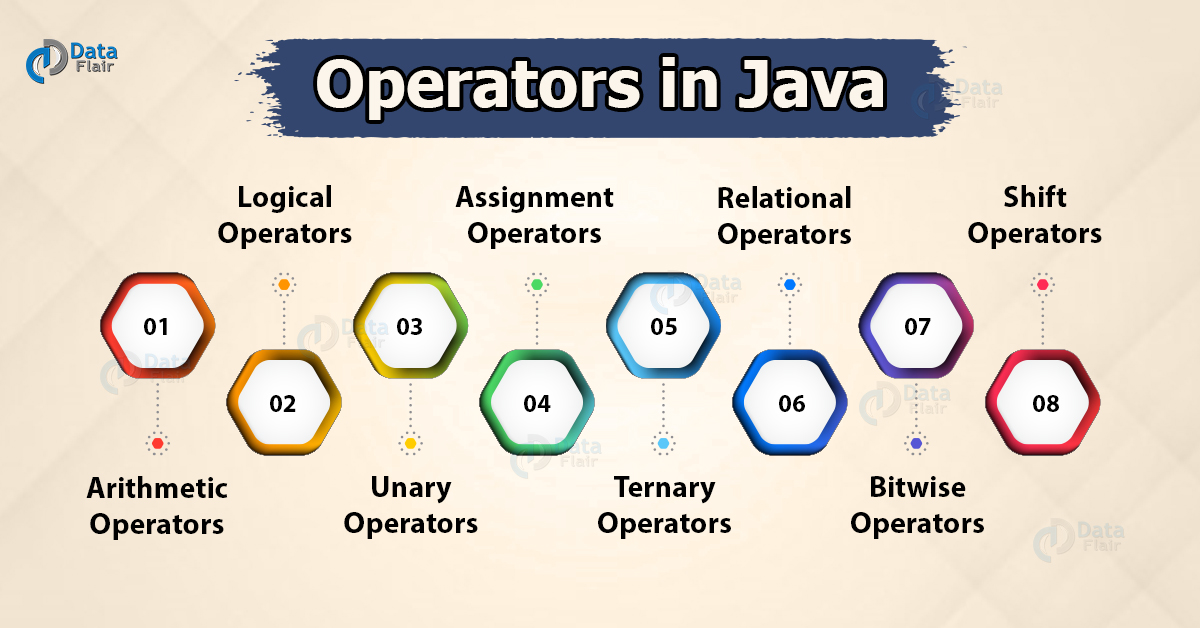
Types Of Java Operators Nourish Your Fundamentals Dataflair
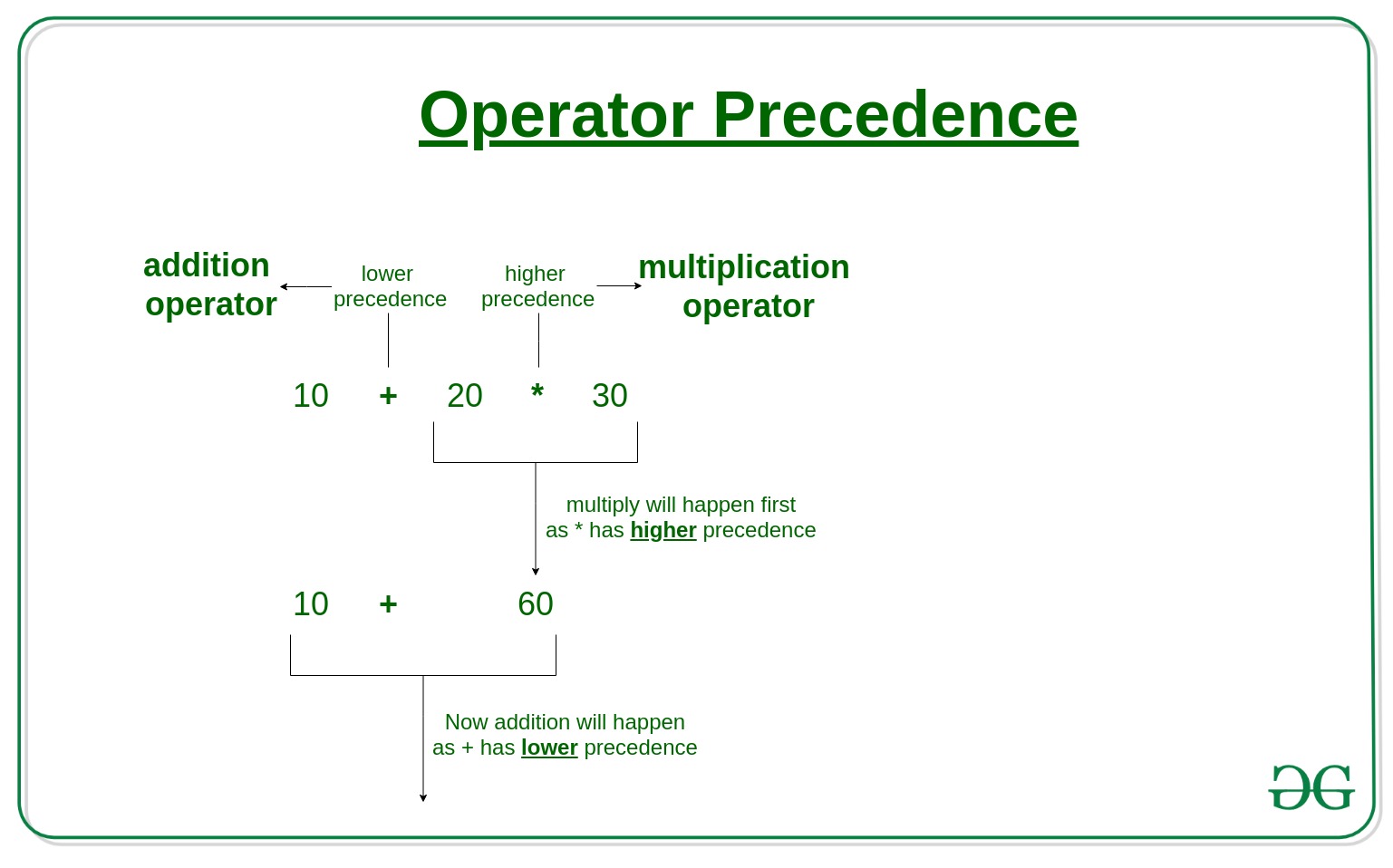
Operator Precedence And Associativity In C Geeksforgeeks
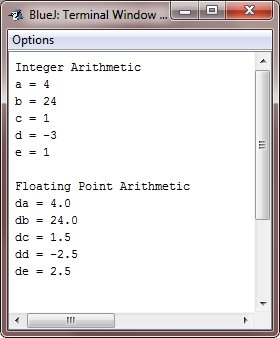
Java Arithmetic And Modulus Operator
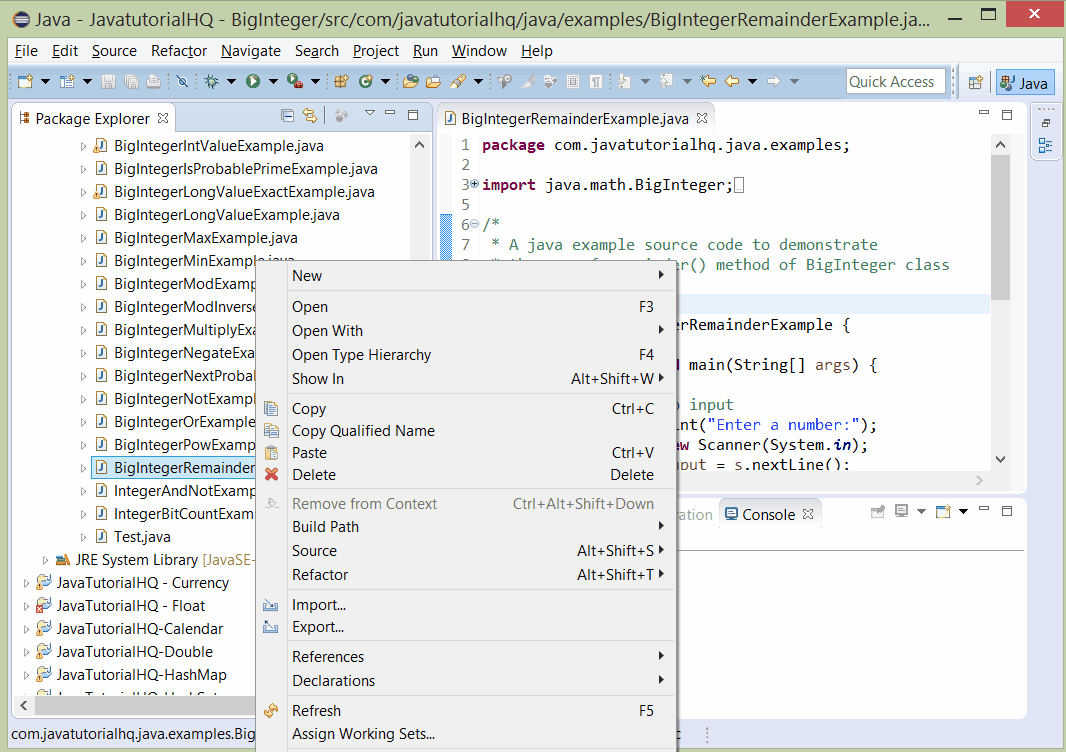
Q Tbn 3aand9gcr9ukhtlatepwyt0re4mpfpigldptdblmvxcq Usqp Cau
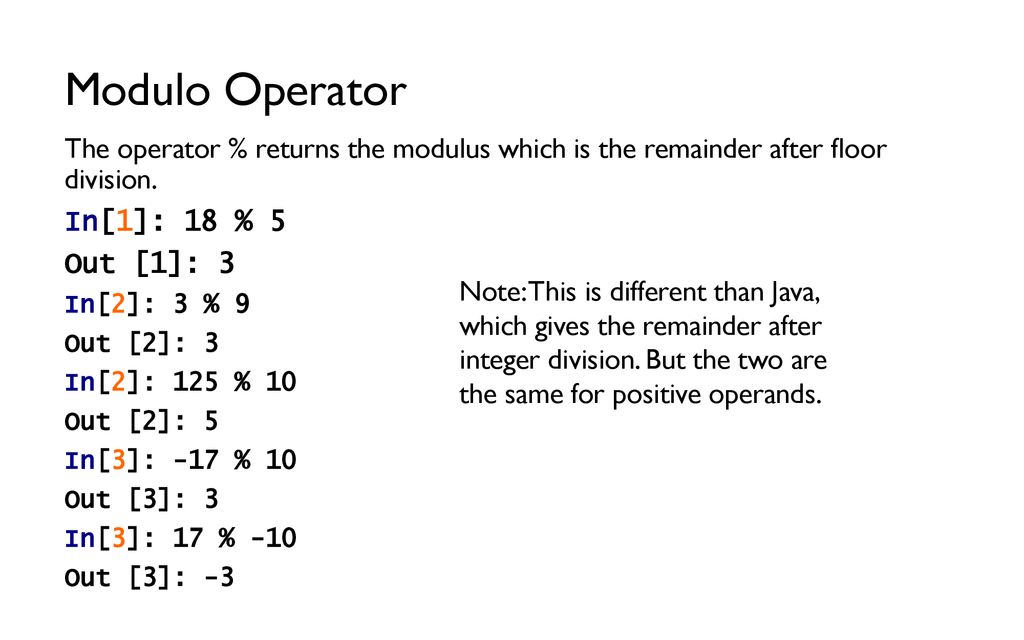
Introduction To Python Ppt Download

Modulus Operator In Java Youtube
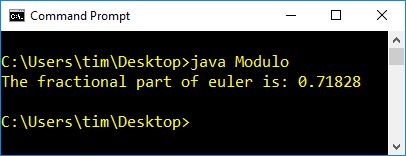
Casting Converting Numbers

Mod Division In Java Vertex Academy

Modulo Problem In Java Dreamix Group
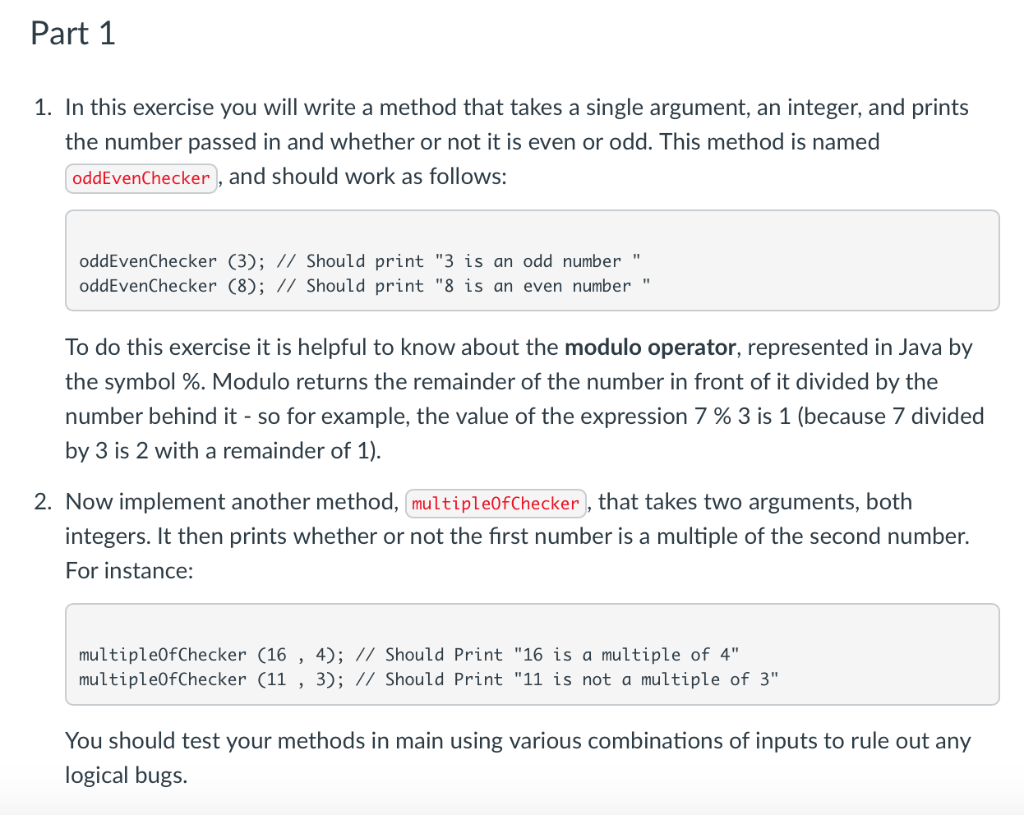
Solved Please Solve The Following Please Type Out Code Chegg Com

Java Modulo Operator Modulus Operator In Java Journaldev
Http Bvrithyderabad Edu In Wp Content Uploads 03 4 Operators In Java Pdf

Solved 3 Reverse Java Use The Do While Loop pts Cr Chegg Com

Java Operators Learn To Use Them In Real Programs

Introductory Java Programming For Ap Computer Science A Lesson 3 4 The Modulo Operator Youtube
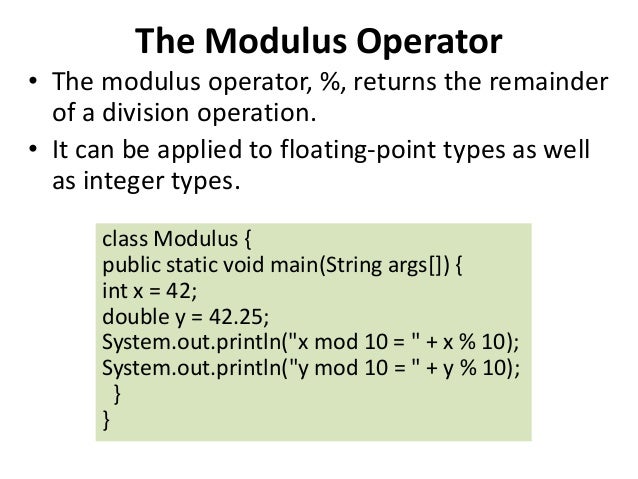
Java Chapter 3

Modulo Operation Even Odd Numbers In Java Youtube

Surprise Javascript Doesn T Have Modulo Operator Learnjavascript

What Is The Result Of In Python Stack Overflow

Check Whether Number Is Even Or Odd Stack Overflow
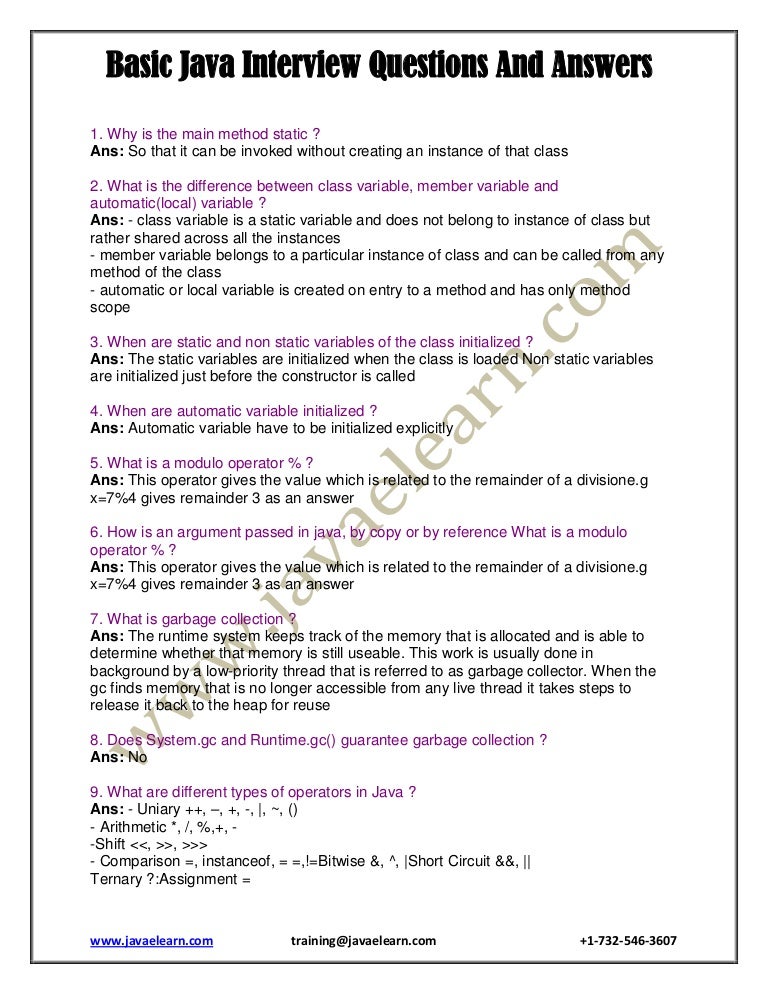
Basic Java Interview Question And Answers

Codeacademy Basics Plus Control Flow Uwo Studocu
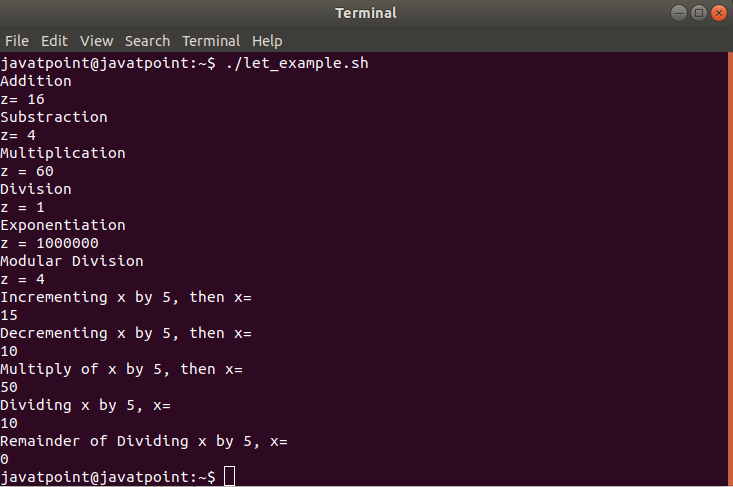
Bash Arithmetic Operators Javatpoint

Operators And Variables

The Modulo Operator Unplugged Cs Unplugged

Operators In Java With Examples Dot Net Tutorials

Modulo In Order Of Operation Stack Overflow
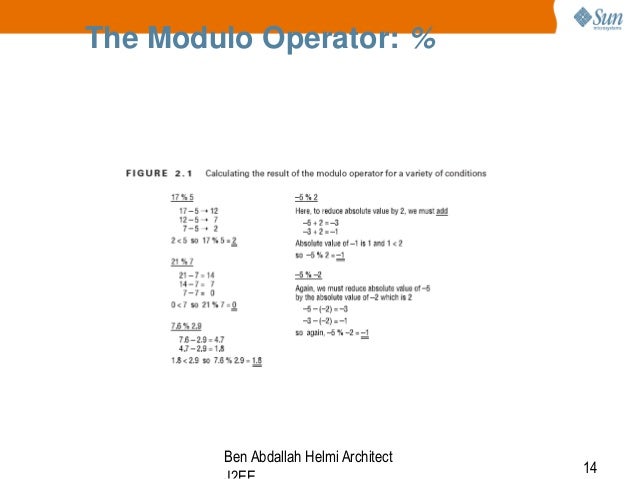
Chapter 3 Programming With Java Operators And Strings

Java Operators And Expressions Java Tutorial Java Download Java Programming Learn Java

Mod Division In Java Vertex Academy

Java Tutorial Division And Modulo Operator Explained Youtube

Java Eclipse Modulus Operator Demo Youtube
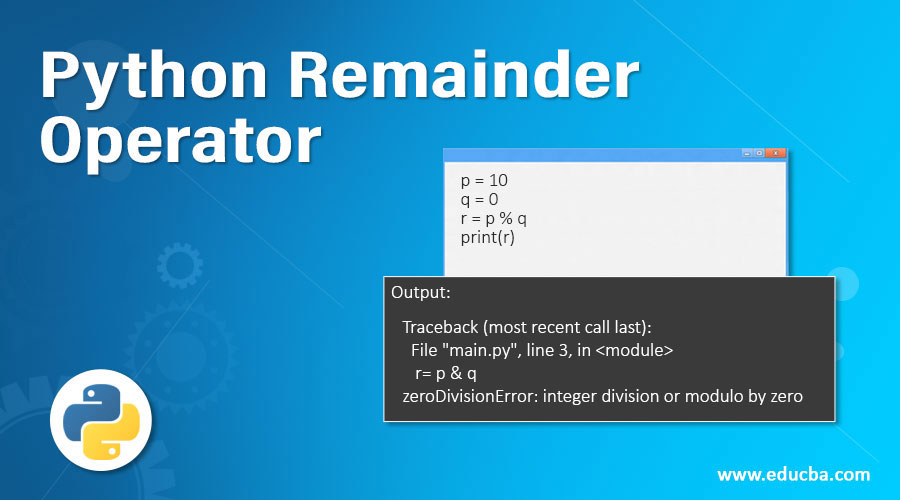
Python Remainder Operator Obtain Remainder From Modulo Operator
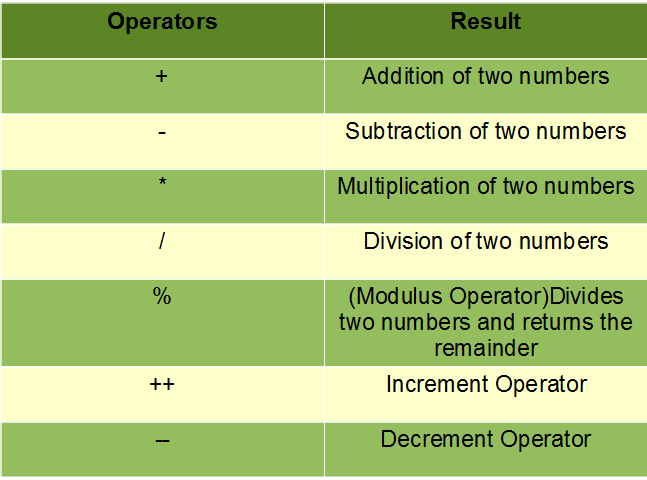
Basic Operators In Java Geeksforgeeks
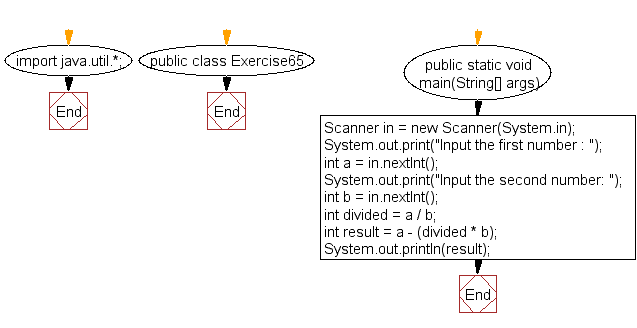
Java Exercises Calculate The Modules Of Two Numbers Without Using Any Inbuilt Modulus Operator W3resource

How Python S Modulo Operator Really Works

Mod Division In Java Vertex Academy

02 C How To Find Modulus Without Using Modulus Operator Youtube
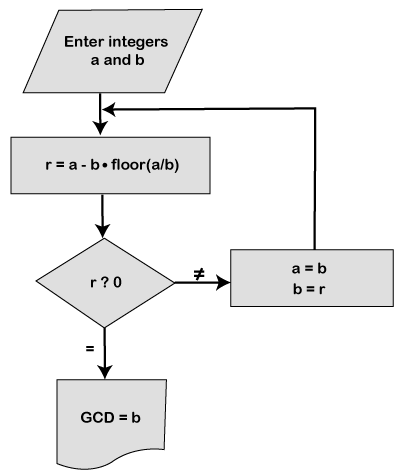
Java Program To Find Gcd Of Two Numbers Javatpoint
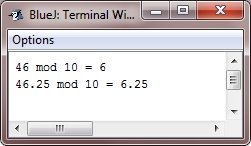
Java Arithmetic And Modulus Operator
How Was Operator Precedence Determined In Java Quora

Check If A Number Is Even Or Odd Without Using Modulo Or Division Operators In Java
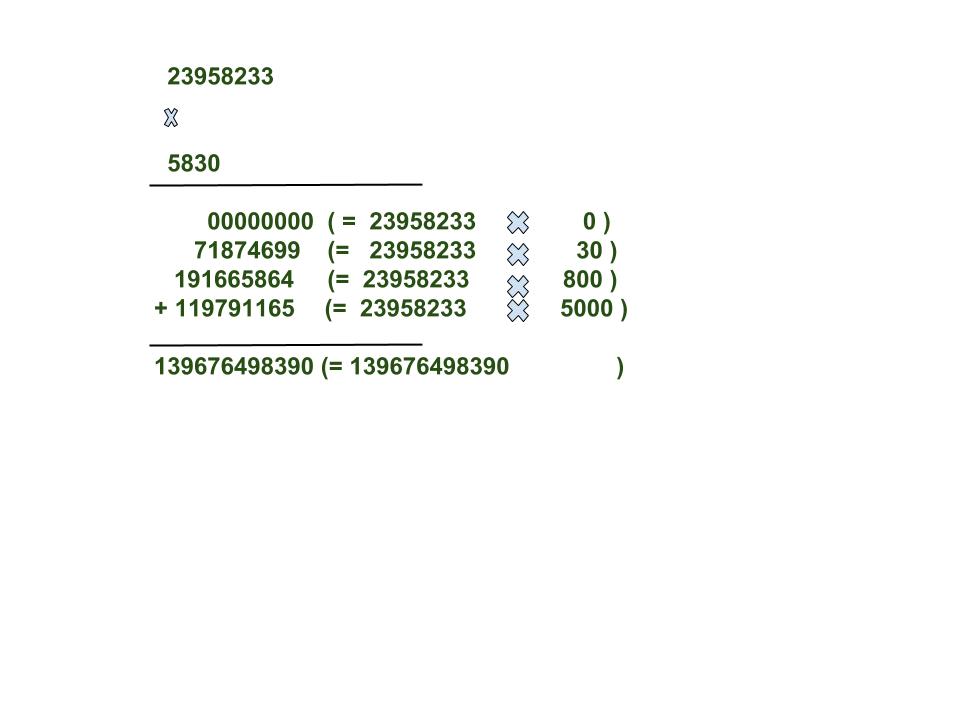
Multiply Large Numbers Represented As Strings Geeksforgeeks

Arithmetic Operators In Java List Of Various Arithmetic Operators In Java
Q Tbn 3aand9gcsvysb 6tvggkowcyhmc9rxykhoqt3lnoeriuntw Hsvjohydzr Usqp Cau
Finally Got Why Modulus Operator Is Not Used With Float Type Values In C C Solution
How To Use Bitwise Operator In Java Power Of Two Example Java67

Mod Division In Java Vertex Academy
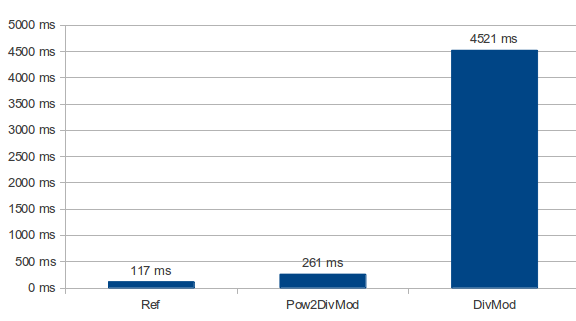
Faster Division And Modulo Operation The Power Of Two Adam Horvath S Blog
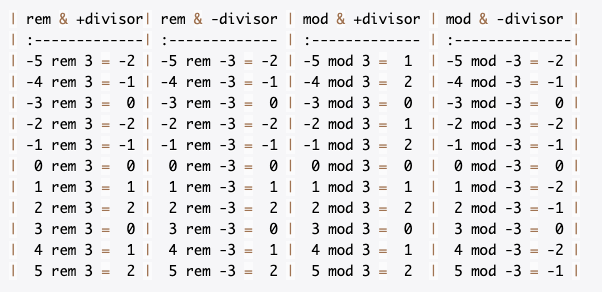
Java Using Math Floormod To Describe A Modulo Or Modulus Operation And Operator For The Remainder Operation T Co Tm1nkjpiuu T Co Tlnfn3xdgs

Mod With Negative Numbers Gives A Negative Result In Java And C Stack Overflow

Solved Rewrite The Increment Method Without The Modulo Operato Chegg Com
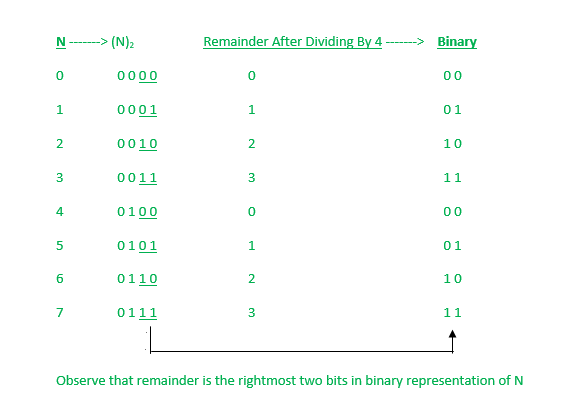
Find The Remainder When N Is Divided By 4 Using Bitwise And Operator Geeksforgeeks
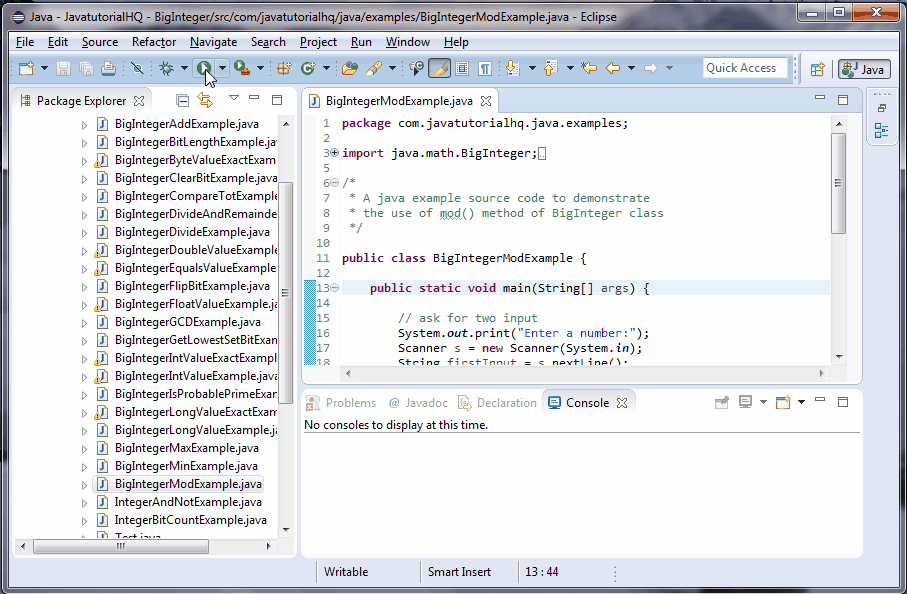
Q Tbn 3aand9gcqqcckey4ou2ku6jzt Ev6qk9qu0vcnq0el W Usqp Cau

Silicon Vanity Tech Lifestyle In Silicon Valley Codecademy Learn Java Tutorial Walkthrough 9 Math Modulo

Java Tutorial 13 Modulo Youtube

Mod Division In Java Vertex Academy

Java Modulus Operator Remainder Of Division Java Tutorial

Problem 4 Tuesday Tutorial Java Modulus And If Then Else Statements And Or Youtube

Operators In Java Flower Brackets Code Here
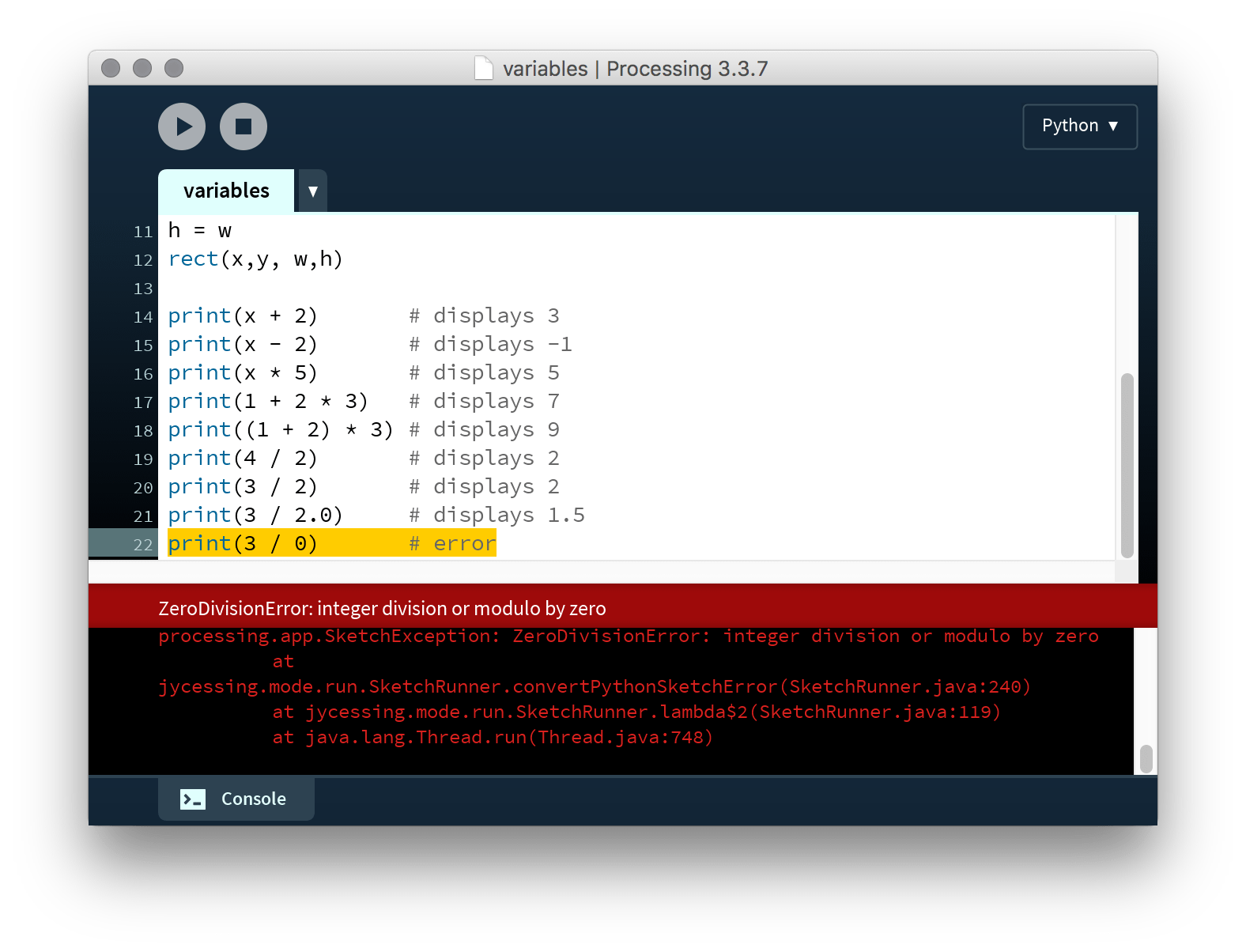
Processing Py In Ten Lessons 1 5 Arithmetic Operators
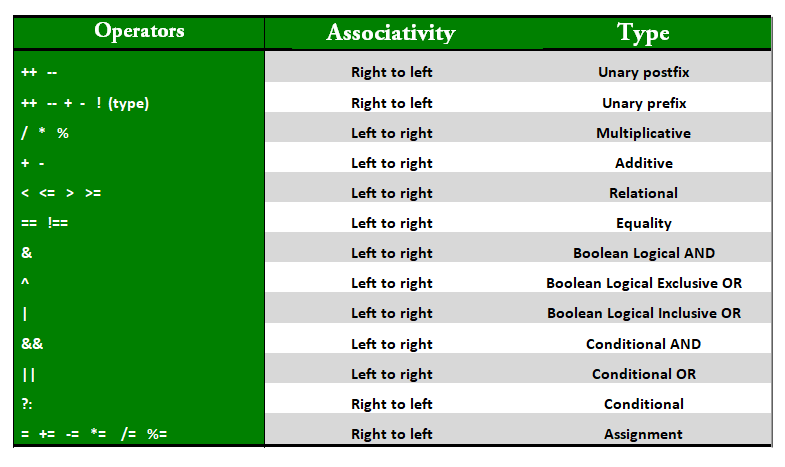
Operators In Java Geeksforgeeks

011 Using Operators And Modulus Division In Java Youtube

What Is The Result Of In Python Stack Overflow

Introduction To Mod Code
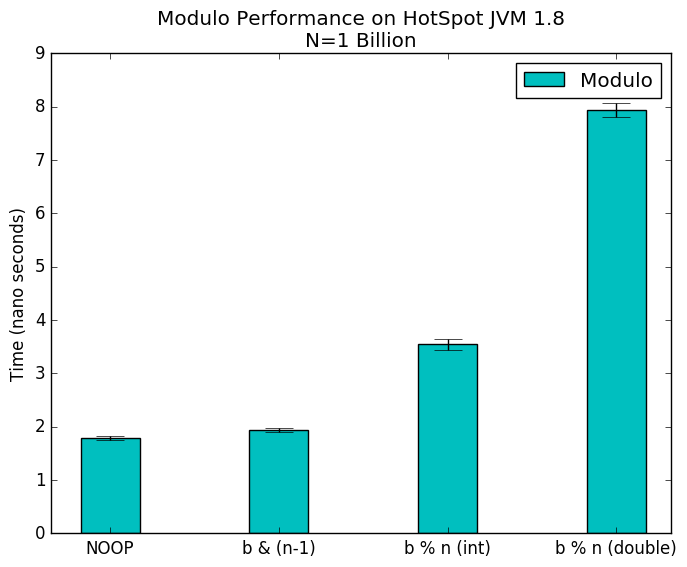
Modulo Operator Performance Impact Joseph Lust
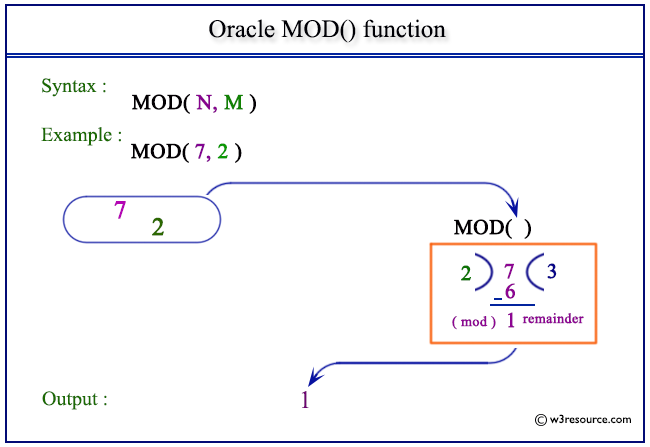
Oracle Mod Function W3resource
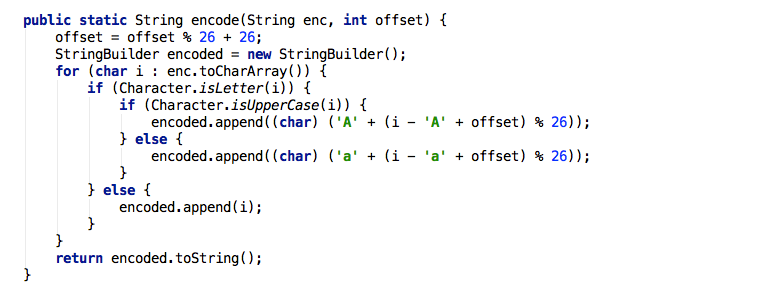
Application Of Modulus When I First Heard About The Modulus By Bella Vid Medium



